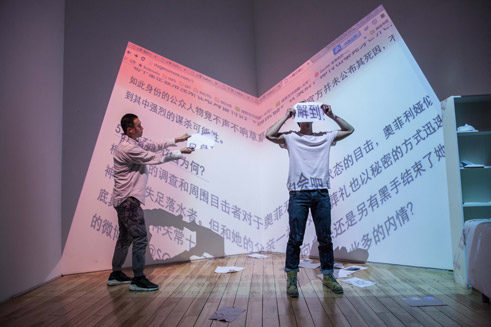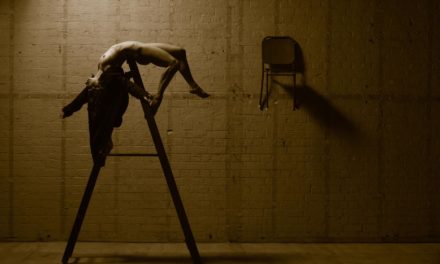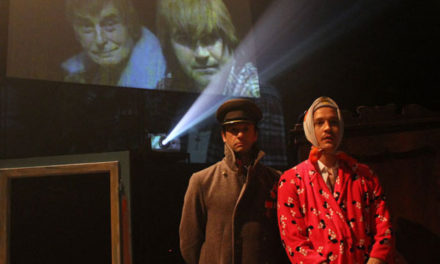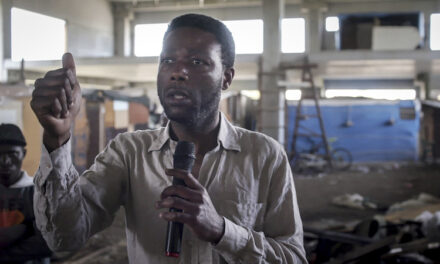The stage is a natural home for performance art, but any location where a performance can happen might be called a “theatre.”
In mainland China, more and more artists are leaving the stage and performing their plays on the street or at restaurants, museums, scenic destinations, internet cafes, and even online. Limited by the censorship system, China’s mainstream theatres are divided from society in a variety of ways, and masterpieces that truly reflect present realities are extremely rare. In contrast, the characteristics of real places can be used to enhance performances, and this has gradually come to be seen as a valid alternative. This trend is a reflection of the shortcomings of the out-of-touch mainstream theatre system, but it is also undoubtedly a response to the growing global phenomenon of so-called “site-specific theatre.”
STRONG SUPPORT FROM NEW ART FAIRS AND ORGANIZATIONS
Just as artists have become increasingly interested in site-specific theatre, a number of new, domestic art fairs and organizations have provided them with a crucial measure of support: funding. Compared to Europe, the audience for theatre in China is younger and less stable, but open-minded towards novelty, providing fertile soil for the growth of off-stage performances.
In 2013, a number of Chinese art fairs and organizations began promoting performances outside of traditional spaces, providing opportunities for young artists to test the waters. That year, the first Wuzhen Theatre Festival (乌镇戏剧节) included an Outdoor Carnival, in which various areas of the scenic area around Wuzhen were utilized for performances. Impromptu stages were devised from the black-awning boats typical of the region south of the Yangtze, as well as the White Lotus Pagoda (白莲塔) – the town’s tallest building. The Beijing ONE Arts Festival (北京ONE国际表演艺术周), launched by the curators Niu Ruixue (牛瑞雪) and Yu Ge (于歌), staged dozens of small-scale performances and works of visual art in the hutongs, courtyards, cafes, and shopfronts of Old Beijing, fully integrating itself into the community. Efforts like these have freed performance art from binary categories of black boxes (theatres) and white boxes (galleries).
In 2015, Beijing’s highly influential Nanluoguxiang Performing Arts Festival (南锣鼓巷戏剧节) included a module entitled “Changing the Public Landscape”, which encouraged theatre artists to think outside the box, explore new performances spaces alongside audiences, and use art to unite society and reflect reality. In June 2016, Shanghai’s Xintiandi Festival (表演艺术新天地) transformed the downtown lifestyle commercial area Xintiandi from a lifestyle into an art space, creating a new model for combining commercial spaces and performance art. In today’s China, the tide of commercialization is unavoidable, and a key issue facing many leaders in the art world is how to mingle with commerce without sacrificing artistic integrity. “We are always building new theatres, but after they are built, their utilization rates are low. Why aren’t we thinking more about using ready-made spaces? This is a breakthrough in the performance market”, said Shui Jing (水晶), curator of the Xintiandi Festival.
A NEW HOME FOR EXPERIMENTAL PERFORMANCE ART
Far from the centre of Beijing, outside the Fourth Ring Road, there were originally two small-scale performance art spaces created by artists: Caochangdi Workstation (草场地工作站), led by Wen Hui (文慧) and Wu Wenguang (吴文光), and the Paper Tiger Theatre Studio (纸老虎空间) in the Tuo Yuan Art District (驼院艺术区), directed by Tian Gebing (天戈兵) and Wang Ya’nan (王娅婻). These spaces grew out of the artists’ individual studios and independently staged experimental performances in a semi-underground fashion for audiences dominated by art-world insiders. In early 2015, Caochangdi Workstation had to close its doors due to rising rents, and a few months later, the Paper Tiger Theatre Studio also closed due to demolitions. Subsequent performances of these artists’ works have been held in museums. In December of 2015, Wen Hui’s documentary performance Red (红) was staged at Shanghai’s Power Station of Art (上海当代艺术博物馆), and Fei Fei Fei Fei, (非肥匪费) a work choreographed by Tian Gebing, was performed in the galleries of Shanghai’s Rockbund Museum (上海外滩美术馆).
The Ming Contemporary Art Museum (明当代美术馆), which opened in 2015, is another player in this trend. The privately run museum, which is located in a renovated paper mill, has defined the function of its space as “the concentrated promotion of contemporary art activities on the basis of visual performance.” Qiu Zhijie (邱志杰), the director of the museum, believes that the integration of performance art and visual art is a clear international trend, and the Ming Contemporary Art Museum fills a void, since China previously lacked an art museum dedicated to this union. Indeed, the growing bond between experimental performance and art museums is timely. In China, experimental performance has long remained on the fringes of the theatre market, with limited audiences. The financial and spatial resources of art museums offer support that undoubtedly expands the creative possibilities in this field. In this way, the economic pressure of high stage rental fees can be dissipated. Moreover, off-stage performance pieces are currently a gray area in the ever more strict censorship system, providing a rare opportunity for artists to express themselves without limitation. While the hardware and facilities of museums rarely match those of traditional theatres, they can also challenge artists to devise new performance techniques.
OFF-STAGE PERFORMANCE
One work that drew widespread attention to an off-stage performance from China’s mainstream theatre world was a play titled Sleep No More (不眠之夜). This immersive theatre work, created by the British theatre company Punchdrunk, has had a popular run in New York in recent years. Many Chinese dramatists first became aware of the fresh and playful possibilities of immersive theatre through this play. A Chinese version of Sleep No More arrived in Shanghai in 2016, and a number of similar projects are currently in production.
Compared to immersive theatre productions, which are relatively expensive, site-specific theatre cleverly takes advantage of the characteristics of ready-made environments. This form has become the choice of many producers and curators because it negates the need to spend time and money to change the space. These works tend to draw on the actual environments of today’s China for their subject material, or they are chosen to suit such environments; either way, they are closer to people’s everyday lives than the average stage play. Li Jianjun (李建军) and his New Youth Theatre (新青年) staged a work titled 25.3km, for which they rented a public bus and took 40 passengers on a “year-straddling journey” on the last day of 2014. The city’s scenes of New Year’s revelry became the play’s setting – one with a power that no man-made backdrop could attain. The director Liu Yang (刘阳) staged Strindberg’s Miss Julie in a building of the East-meets-West shikumen (石库门) style in Shanghai, in which the audience was invited to step into Miss Julie’s parlour and bedroom. This staging utilized a classic of Western theatre to subtly convey a powerful sense of the times in China. Tunnel Show and Parlour Tour, by the experimental musician Yan Jun (颜峻), were both created to reflect the present ecology of music in China. The survival of the Livehouse music venue was being threatened by rising rents, a limited operating model, and clashes with government monitors. Yan Jun’s two projects abandoned the professional facilities and technical proficiency associated with Livehouse’s shows, opting instead for improvisational performances in public spaces and private homes, creating a highly intimate and interactive environment for music.
China is home to an immense internet user base. Virtual life has become a kind of reality here, leading some young artists to use new media to stage performances. Among these projects are Sun Xiaoxing’s (孙晓星) works exploring youth subcultures, including ——Here is the Dividing Line—— (——这里是分割线——, 2015), and Speed Show: Drift Internet Café (Speed show:漂流网咖, 2016). Ye Funa (叶甫纳) and Bei Ou (北鸥) used mobile phones to live-broadcast the voyeuristic Peep Stream (直播计划, 2015), and the independent art group Stage No More addressed the influence of social media on modern life in The Moments When We Chat (当我们聊天时, 2014) and Hamgate (哈姆雷特门, 2016). These works were either performed online or in some combination of online and offline, expressing the reflections on contemporary internet culture of a younger generation of creative artists.
Translated by Daniel Nieh
Chen Ran (陈然) is a theatre director and a performing arts writer and critic.
This article was originally published in the online cultural magazine of the Goethe-Institut China. Reposted with permission. Read the original article.
This post was written by the author in their personal capacity.The opinions expressed in this article are the author’s own and do not reflect the view of The Theatre Times, their staff or collaborators.
This post was written by Chen Ran.
The views expressed here belong to the author and do not necessarily reflect our views and opinions.


















